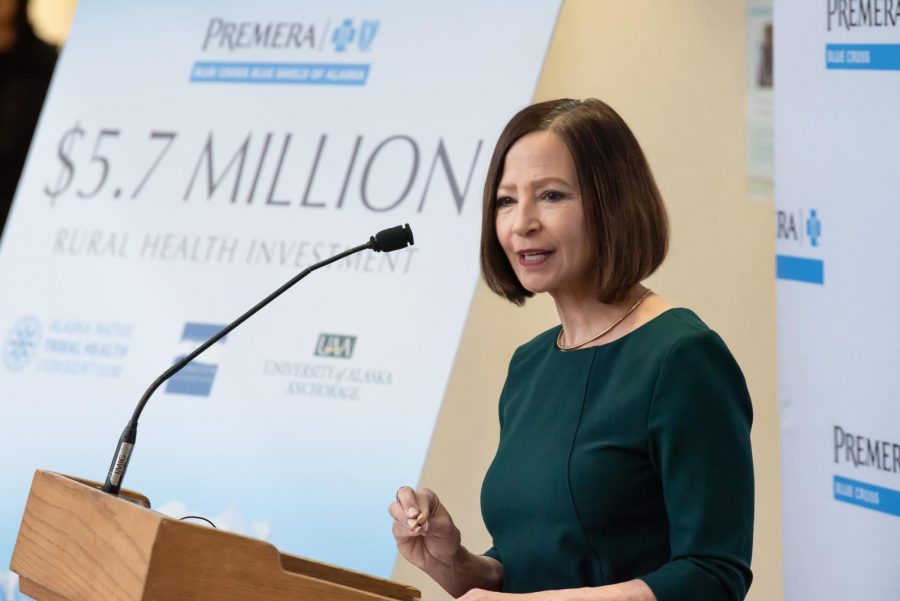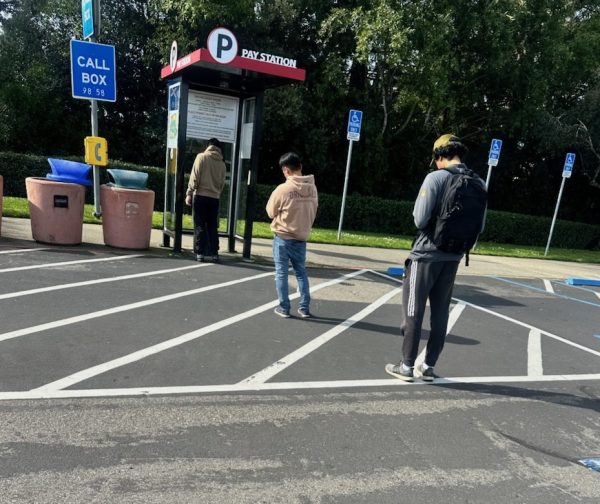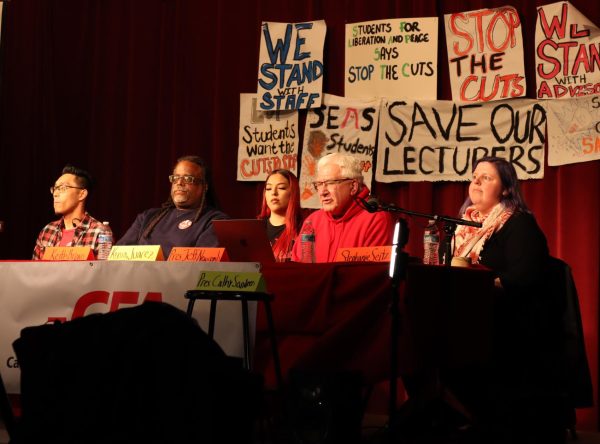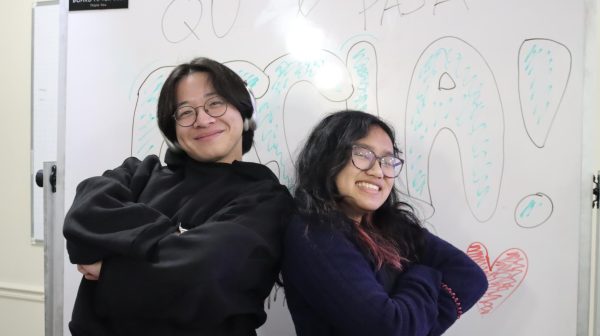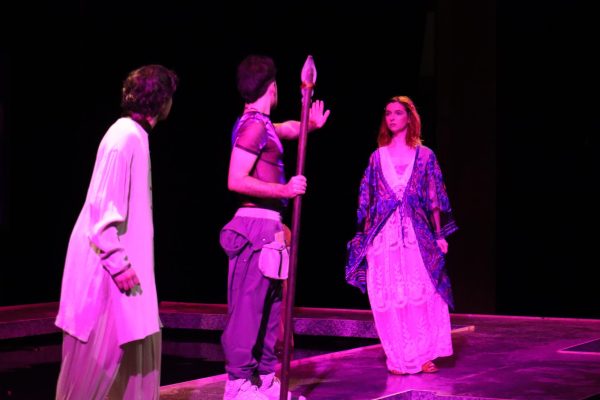Cathy A. Sandeen Joins CSUEB in Early 2021 as New President
On January 4, 2021, University of Alaska, Anchorage’s Chancellor, Cathy A. Sandeen will start her new position as president of California State University, East Bay.
Although Sandeen will start her new position at CSUEB predominantly remote, she has high hopes for her presidency.
What is one thing you would like to accomplish in your first year as president at CSU East Bay?
“Well, because of COVID and we all hope that this thing ends within the next year. I want to help work with the community, the campus community to transition out of this pandemic mode that we’re in. So that’s something that I hope happens during my first year. I think it will. But other than that, what I really would like to do is have initial meetings with all the various stakeholder groups associated with Cal State East Bay, both internal and external and really start a collaborative and productive conversation and working relationship with everybody. I think that’s important. So people get to know me and you told me, you only asked me only one thing that I have to add one other thing, from those conversations and from listening and learning, I would hope to really focus on a few impactful priorities. So knowing that what’s important to Cal State East Bay and to me closing equity gaps, the anti-racism work that is becoming more and more important in universities across the country and then sustainability. And I do think those areas overlap and wouldn’t it be great if we could identify a few really concrete things that we can do in those areas and have those identified by the first year. So if I can get all that done, it’ll be a very good first year.”
What do you think the next couple of years holds for our campus in terms of budget cuts, layoffs, furloughs, as the pandemic kind of hits home?
“As you know, I was just appointed last week and although I did my research about the campus and the university, I haven’t spent much time there to dig into the issues, but I do know that the state of California is projecting budget deficits. And of course, that will mean, an impact on the university budget. We don’t know what that will be, but it’s probably something to expect. In addition, just judging from what’s happening at the university where I am now, we’ve had additional expenses because of COVID. We have only 25% of capacity in our student housing, which of course affects the whole budget of the student housing. So, I, that there’ll be some financial challenges, at least for a couple of years. I don’t know what that will result in. I don’t know what the current president is planning or has in play, but I will say that because universities, the majority of their budget is in the form of salary and benefits for people. Oftentimes if it’s a serious budget cut, it does involve a reduction in the workforce. But I’m not saying that now I don’t have all the facts or all the information, but I just want to be open and transparent. It all depends on the seriousness. The good thing about Cal State East Bay compared to other universities in the United States is enrollment is still really strong. You don’t have to deal with enrollment issues, which is really a blessing.”
How would you characterize your leadership style as a leader of a university?
“I really am known for a transparent and open style. We are all participants in this organization called the university and everybody has great ideas and contributions to make. And you can only come up with the best decision if you share information openly, what’s going on. So that’s my preferred style. That’s what I’m known for a more collaborative and consensus-driven style. And that’s what I would bring to Cal State East Bay with me. But that said, when you are the head of a big organization, there are times like crisis situations where you don’t have time to do a lot of analysis and discussion. You just need to make decisions. Obviously, the response to the COVID pandemic is an example, all presidents and chancellors in the country, had to make some pretty serious decisions. And when I first arrived in Anchorage to become the chancellor up here at this university, two months later, we had a 7.1 magnitude earthquake right in our city. So within 10 minutes, I had to make the decision to close the campus. Everybody go home, we need to assess the damage and then go from there. So sometimes a leader has to make quick and decisive decisions, even when the preferred style is to take time and be open and transparent.”
Cal State East Bay is one of the most diverse campuses in the US and many students are very traumatized by the racial violence injustice we’ve witnessed in our country. What can you do as a president to help support our students in a dangerous time?
“First I want to say that diversity is a huge asset and strength to the university. It’s part of the reason why I want to come there. So I just want to say that right off, off the bat, and that should be a huge source of pride to be listed in the top, most diverse universities in the whole United States. The events of the summer, the death of George Floyd at the hands of police brutality. And, and then the resulting protests just were a wake-up call to all of us. And I know that students feel scared and threatened, I feel scared and threatened, by what is going on. We always knew that this sort of racial profiling and, bias and, brutality was going on, but somehow this event really galvanized us all and brought it to the surface for many of us.
What I have done up here because of course our students were affected as well is make sure that at least at our university where we have control of the environment, that it is a safe, inclusive environment where people feel safe, all people feel safe. So that would be one thing. The other thing is to make sure that students are aware of, counseling, and other support services that are available to them and be very proactive in getting that information out. Because if you just send it once, it doesn’t mean that a student’s going to necessarily, see and absorb it. So there has to be a constant outreach on that and then, you know, examine our own policies and practices to reduce and eliminate systemic racism. So let me give you a couple of examples when we’re hiring faculty or leadership positions here, we always make sure that our search committees are very diverse, that they receive implicit bias training, that we won’t let them interview candidates or review candidates until they have attracted or recruited a diverse pool of applicants.
So putting specific policies in place can counteract racism, another place where we’ve done it is in placement exams, in order for our students to be placed in beginning writing or beginning mathematics courses, standardized exams tend to be culturally biased and certain types of students do better in them than others. [..] The use of standardized testing introduces systemic racism into some of our practices and to just look at all these things that we do through that lens and one by one, start to examine them and see what we can change over time.
They’ll all add up and I hope that it will have a positive impact. Since I have that type of experience here, I would start asking those questions. I’m sure that this sort of work is happening at Cal State East Bay, but maybe I can bring a little additional, you know, background and experience in this area. So I want the students to know that this is not something that I just check the box or give lip service to. It is something that I believe I need to talk about on a daily basis, do something about on a daily basis, and help build a culture where we really truly start to change things.”

In this past week, it has come to light that a professor emeritus at CSUEB, Dr. Gregory Christiansen supports and has published work about the eugenics idea. What can you say about this to students, especially students of color? Do you think that a case can be made that the eugenics idea is hate speech?
“I have just learned about that recently after I accepted the position and, mainly what I’ve learned has been through the media and what, what I have read, but of course, similar situations have popped up at other places. So it’s not anything that I haven’t thought about in general. First of all, I want to say that I do not agree with his views. This area of study is controversial. It is not necessarily well accepted. I do not agree. I find it offensive and I understand that students and faculty of color would feel very hurt and offended as well. But that said, we are a society that values free expression. We have first amendment rights in our constitution and, studying, choosing to study a certain thing, publishing a certain thing, without knowing all the details is generally protected by first amendment rights. And I know that’s troubling. I assume that the university lawyers have looked at whether this has broken any other regulation, laws, policies, or if it rises to the level of hate speech. I assume that they concluded it did not. So that’s not something that I as an individual could change. But I do believe that the cure or antidote to protected free speech that you don’t agree with and find defensive is more speech, the counter-argument strong. And I think it’s really, possible and probable to find many reputable scholars that would be able to provide persuasive arguments to the contrary of the eugenics idea. So I don’t want students to feel, I believe in this or condone it because I do not. But we have to balance the need for academic freedom and first amendment rights. And again, once I get there, I’ll look into the issue in a little bit more detail, but it appears from the media that that’s the situation right now.”
As a communication major, I would love to know, what made you decide to pursue post-graduate degrees and communication?
“Well, when I went for my masters, I really thought that I wanted to work in television, be a director or producer really, hands-on production. And I enjoyed that a lot at San Francisco State at the time. Now there are many places in the system that offer this degree, but at the time it was one of a couple that did, and it was a very great experience. But I got interested more in the academic side of things in analyzing, media messages, and what we’re trying to figure out what was going on. I had the opportunity to be a TA in a class. And then ultimately I was given my own class to teach and I loved that, that took me in a little bit of a different direction where I went on and got a Ph.D. in communication, but I just love the field because it touches us in so many ways. And it’s constantly evolving, you know, now, of course, social media is a big thing that we’re looking at in terms of communication. It’s constantly dynamic, changing, and interesting.”
Do you have any words for the Cal State East Bay student body that are understandably worried about the new leadership, especially first-generation students? And I know you were one of them, who found their collegiate opportunities through your predecessor?
“I do think it’s important that people understand that I’m a first-generation college graduate. I grew up in a neighborhood seven miles away from Cal State East Bay. I’m an East Bay girl. And, neither of my parents went to college. In fact, my father dropped out of high school to join the military in World War II. That was a long time ago. And, they’re smart, and back then you could do well, you still can do well, but, I had other aspirations and I’m really grateful that I lived in a state that provided access to education. I want the students to know that even though we all have different paths and journeys and some are more challenging than others, I know that I was privileged in many ways, but we share that and that’s very important to me.
It’s one of the reasons why I do this work. I wouldn’t work at just any university, only a university like Cal State East Bay, where we’re working every day to really change people’s lives and help them pursue their dreams. And I’m a perfect example of that. So, I want them to know that I am accessible. I walk around, I’m down to earth, I’m a real person. You can talk to me. And, I think in very short order, you’ll find out, they’ll find out and they’ll be comfortable and they’ll know that I am all in, you know, supporting them and what they want to do. And this is maybe I shouldn’t say this, but the students up here, I’m so student-oriented that I even was in a dunk tank for them to raise money. Or if you go on social media and look at YouTube and things that I’ve said or things that I’ve done, I think you get the feel for the type of person I am and very student-centered and always willing to listen. So, I want them to not be nervous. I think they’re going to like me once they meet me, you know we have to deal with the COVID ways of meeting. But we can do it and I look forward to it.”
Do you think, I know that you have Twitter and I also found out that you had an Instagram for, Anchorage, the school that you’re at right now. Do you think that you’ll make an Instagram for when you’re at CSU East Bay?
“I would like to, of course, I would work with the communication team and I think they would like me to, the more messages we get out there, the more we connect with people, the better. I have really found it’s a great way for people to just see what I’m up to. So if you look at my feeds it’s information about the university that I send out and also what I call thought-leadership. So if I find an article or something that is relevant, and I think other people would like to read, I will post that or repost that, and then just some personal stuff. So people can get to see my personality a little bit. I think we might as well use all the channels we have to connect with people.”
What are you most excited about, about returning to your roots in the Bay Area where you started?
“Since it’s 12 degrees here right now in Anchorage, Alaska, it will be nice to get some California weather, but to be perfectly honest with you, I’m excited about the challenge of the job and taking this great university at a place where it’s obvious that faculty, staff, and students are on the same page, moving in the same direction and seeing what else we can do. I know that President Morishita has done a wonderful job and I want to keep that going, nothing will change, but what else can we do, together, that’s what’s exciting. I do have family in the area, so it will be nice to be a little bit closer to them.”
CSUEB’s students look forward to seeing what the future holds for Sandeen as she begins her presidency at CSUEB at the beginning of next year.


